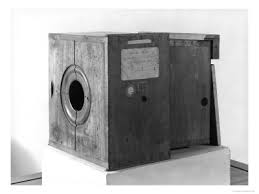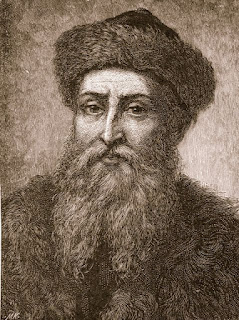Global athletes earn some of the highest wages in the world. We've listed the top 10 athletes based on how much they are paid from forbes. There are top 10 the world's highest-paid athletes:
Bryant had the highest salary in the NBA for the fifth straight year at $23.5 million in 2014-15. Bryant took a $7 million pay cut on his Lakers' salary last season under the two-year, $48.5 million extension he signed in 2013. Injuries limited the 17-time All-Star to only 41 games combined over the past two seasons. The five-time NBA champion still has deals with Nike, Lenovo, Hublot and Panini, but is moving away from straight endorsement deals in favor of being part of businesses. His future includes Kobe Inc., which he set up in 2013. The firm's first investment was $4-6 million in 2014 to buy more than 10% of emerging sports drink BodyArmor. Bryant will sit on BodyArmour's board of directors and focus on the marketing and branding of the product.
Golf pro Tiger Woods has earned $1.35 billion since turning pro in 1996 with barely 10% of the total derived from prize money. The bulk of Woods' fortune was generated from endorsements with the likes of Accenture, AT&T, Buick, Nike and Gatorade. All of those companies have left Woods, but Nike who has stuck by the 14-time Majors winner and pays him more than $20 million a year. Nike built a $711 million-in-sales golf division on the back of Woods.Other current partners include Hero MotoCorp, Kowa, MusclePharm, Rolex and Upper Deck. The first Woods-designed golf course opened last year in Cabo San Lucas, Mexico. Injuries have hampered Woods the last two years and he is currently sidelined after back surgery in September. He turns 40 at the end of December 2015.
Mickelson earns more than $40 million annually from appearances and endorsement partners Callaway, Barclays, KPMG, Exxon Mobil, Rolex and Amgen. He picked up a deal to promote psoriatic arthritis drug Enbrel after he was diagnosed with the disease in 2010 and used the drug for his treatment. The five-time Major champion re-upped with Callaway last year in a multi-year deal to use Callaway's clubs, balls and bag during tournaments. It continues a partnership that began in 2004. Mickelson has racked up 42 PGA victories (ninth all-time), but his last win came two years ago at the 2013 British Open. His $77 million in career prize money ranks second all-time.
The four-time NBA scoring champ won his first MVP trophy in 2014 after leading the Oklahoma Thunder to the second best record in the NBA. The 2015-16 season is the final year on the $85 million contract he signed with the Oklahoma City Thunder in 2010. Durant inked a blockbuster, 10-year deal with Nike in 2014 that could be worth up to $300 million, including royalties. It is the richest endorsement deal of any active athlete. Nike is one of a dozen sponsors in Durant's arsenal, which also includes BBVA, Sprint, Sonic, Panini, 2K Sports, Skullcandy and more.
James is the first NBA player to appear in five straight NBA Finals since the Boston Celtics dynasty of the 1960s. The NBA's four-time MVP returned to Cleveland in July 2014 when he signed a two-year, $42.1 million contract after four seasons in Miami. James inked the shorter deal, instead of a richer four-year pact, so he could be a free agent again in 2016 when the NBA's new $24 billion TV deals kick in and sends the salary cap soaring. The NBA's top pitchman added Kia Motors to his endorsement portfolio, which already included Nike, McDonald's, Coca-Cola, Samsung, Beats by Dre, Upper Deck, Tencent and Audemars Piguet. Sales of his signature Nike shoes were tops among active players at $340 million in the U.S. during 2014, according to research firm SportsOneSource. His Cavs jersey was also the NBA's best-seller.
After seeing his world ranking drop to No. 7 in 2013, Federer rebounded last year and finished the year ranked second. He continues to be among the world's best players 17 years after he turned pro. He holds the records for most singles Grand Slam wins (17) and career prize money ($90 million). He appeared in a staggering 18 out of 19 Grand Slam finals between 2005 and 2010. His endorsement portfolio is filled with long-term deals with blue-chip companies like Nike, Rolex and Credit Suisse. He extended his Mercedes-Benz deal at the end of 2014 for another three years. His sponsors collectively pay him more than $40 million annually. The latest addition is a five-year pact with Sunrise, the largest private telecommunications provider in Switzerland.
In 2014, Barcelona awarded their record four-time FIFA player of the year with a $9 million a year raise in his 7th contract since 2005 to bring his take home pay to $50 million a year through 2018. The Argentine holds records for most goals in Barca competitions, most goals in La Liga competitions, most goals scored in a calendar year and most hat tricks scored. His superhuman talent is why sponsor Samsung cast him as superhero Iron Man in their ad to promote the Avengers film. It's also why his main sponsor Adidas launched a Messi icon line of shoes and apparel which has exceeded company sales expectations, including in the U.S.
 Pacquiao's $125 million payday for his bout against Floyd Mayweather was four times his previous high for a boxing match (Pacman's boxing earnings also include $23 million for his November fight against Chris Algieri). Pacquiao boosted his income further through endorsement deals with Nike, Foot Locker, Wonderful Pistachios, Nestle's Butterfinger and a handful in the Philippines. The pugilist and Filipino Congressman is sidelined for the rest of 2015 after shoulder surgery to repair a torn rotator cuff.
Pacquiao's $125 million payday for his bout against Floyd Mayweather was four times his previous high for a boxing match (Pacman's boxing earnings also include $23 million for his November fight against Chris Algieri). Pacquiao boosted his income further through endorsement deals with Nike, Foot Locker, Wonderful Pistachios, Nestle's Butterfinger and a handful in the Philippines. The pugilist and Filipino Congressman is sidelined for the rest of 2015 after shoulder surgery to repair a torn rotator cuff.
Mayweather's $300 million year shatters the record for athlete earnings, which was previously held by Tiger Woods who banked $115 million in 2008. Mayweather's May 2 fight against Manny Pacquiao crushed multiple boxing financial records, including PPV buys (4.4 million), total gate ($73 million) and sponsorships ($13 million). The fight is expected to gross more than $600 million once everything is counted. Mayweather has typically shunned endorsement deals, but inked agreements with Hublot, FanDuel and Burger King ahead of the May fight. The Pacquiao fight marked the fifth bout in the blockbuster 30-month, six fight deal he signed with Showtime in 2013. Mayweather, whose record stands at 48-0, plans to fight in September to complete his Showtime deal and then retire.



















































